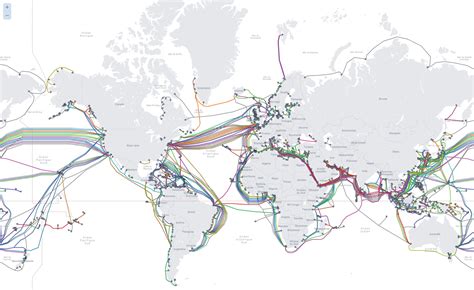GULF OF FINLAND – In the calm waters of the Gulf of Finland, where seagulls glide effortlessly and the waves gently lap against the shores, a new kind of warfare is brewing beneath the surface. Once a serene expanse that mainly witnessed rescue missions for stranded sailors, this strategic maritime territory has now become a battleground for unseen threats—saboteurs targeting undersea cables vital to Europe’s connectivity.
“This is becoming more common.”
As tensions escalate between Europe and Russia, Deputy Commander Ilja Iljin of Finland’s coast guard finds himself at the forefront of a high-stakes game. His mission? To safeguard critical infrastructure from potential acts of sabotage that could disrupt internet services and power supply across the continent. Armed with state-of-the-art technology and vigilant patrols, Iljin leads a dedicated team in monitoring suspicious activities that pose a threat to these essential undersea links.
New Frontiers of Conflict
In recent years, incidents of sabotage have surged in the Baltic Sea region. With mysterious cable cuts and disruptions plaguing key connections between countries like Sweden, Germany, Latvia, and Estonia, authorities are on high alert for any signs of coordinated attacks. The implications are grave—energy shortages, soaring prices, and geopolitical turmoil loom ominously on the horizon.
Amidst these mounting challenges lies a deeper concern: Could these covert actions be orchestrated by external forces seeking to destabilize European nations? While definitive proof linking Moscow to these incidents remains elusive, speculations abound regarding Russia’s potential involvement in fomenting chaos through clandestine methods.
The Anatomy of Sabotage
The modus operandi behind undersea sabotage is deceptively simple yet devastatingly effective. Anchors dropped carelessly by ships can sever delicate subsea cables that carry crucial data and power transmissions. These lifelines hidden beneath meters of water hold together Europe’s digital infrastructure with threads thinner than an arm’s width—they are both resilient and vulnerable targets in this invisible conflict.
Repairing these damaged cables is no easy feat; specialized vessels equipped for such tasks are limited globally. The intricate process involves painstaking efforts that can take weeks or even months to complete successfully—an expensive endeavor fraught with logistical hurdles in an already complex maritime landscape.
A Tumultuous Future Ahead
As Europe grapples with escalating tensions and growing uncertainty surrounding its security landscape, experts warn of potential escalation into full-blown crises if proactive measures aren’t swiftly implemented. The specter of widespread disruption looms large over regions heavily reliant on interconnected energy networks—a scenario that could plunge entire nations into darkness and chaos if left unchecked.
With global powers jostling for dominance in this underwater arena, each move carries profound implications for regional stability and international relations. As alliances shift and traditional defense mechanisms come under scrutiny, devising innovative strategies becomes paramount to safeguard against emerging threats lurking beneath tranquil waters.
In response to these escalating risks, initiatives like NATO’s “Baltic Sentry” program aim to bolster surveillance capabilities while enhancing coordination among member states to counteract potential acts of aggression targeting critical infrastructure. By investing in cutting-edge technologies and collaborative frameworks geared towards resilience-building, Europe seeks to fortify its defenses against unforeseen challenges lying just beneath the surface.
Rising to Meet the Challenge
While uncertainties persist regarding future developments in this shadowy conflict zone beneath the waves, one thing remains clear—the need for vigilance has never been greater. As governments rally their resources and expertise to confront this evolving threat landscape head-on,
the battlelines drawn across Europe’s underwater frontiers herald a new era where preparedness spells the difference between security or vulnerability amidst shifting tides of geopolitical strife.




Leave feedback about this